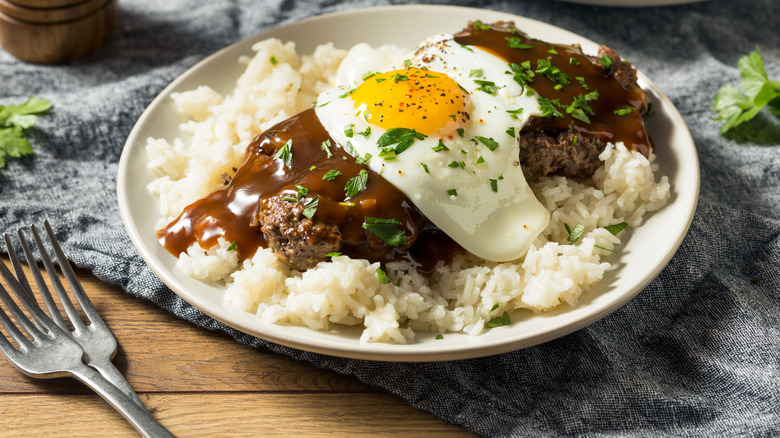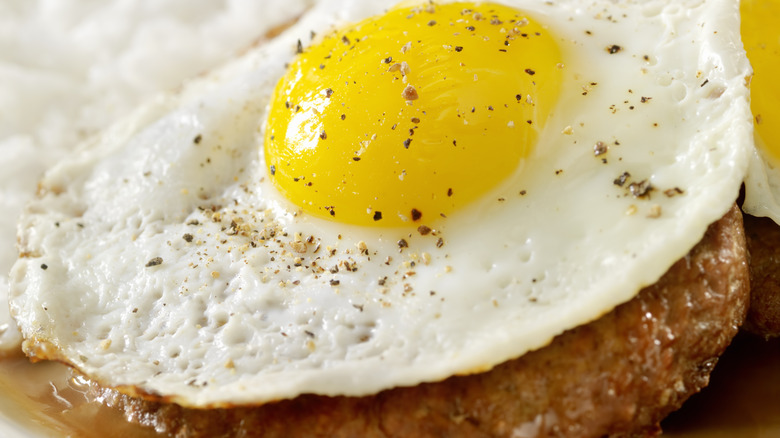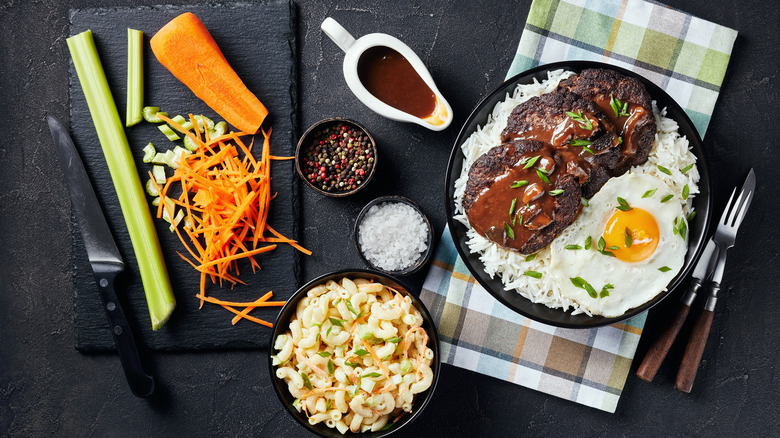Loco Moco Is The Beloved, Savory Hawaiian Dish You Should Know
Known today for its surfing and unparalleled natural beauty, the Hawaiian archipelago is also one of the world's most isolated chains of islands. So, while it's technically a part of the U.S., Hawaii has a unique history, culture, and language you won't find anywhere else. A prime example of Hawaii's cultural bounty is its cuisine, reflecting an amalgamation of Asian, European, Polynesian, and American influences.
While you might associate Hawaiian cuisine with Spam, Mai Tais, and poke bowls, the islands have far more to offer. One of the most ubiquitous dishes found at diners, fast food spots, and kitchen tables throughout Hawaii is loco moco. The height of Hawaiian soul food, loco moco consists of white rice topped with hamburger smothered in gravy and a fried egg to top it off.
The dish originated in Hawaii and remains a mainstay on every menu as a comforting and filling dish to enjoy for breakfast, lunch, or dinner. It's easy to make at home, open to customization, and celebrates a fusion of cultural heritage that Hawaiians are proud to identify with.
The history of loco moco
According to lore, the now-defunct Lincoln Grill's most frequent customers were a gaggle of teenage football players from the Lincoln Wreckers Athletic Club located across the street in Hilo on the Big Island. The Lincoln Grill's menu contained typical Hawaiian diner fare — a mixture of American classics like burgers along with Asian and Polynesian-inspired dishes like fish and noodle soup and chicken or pork over rice.
Looking for something both cheap and filling, the teenagers requested a dish that blended American and Hawaiian culinary traditions. Instead of a bun, they wanted a bowl of white rice as a more substantial base for a burger patty covered with brown gravy. The Lincoln Grill owners decided to name the dish after the football player who originally ordered the dish, known to his teammates as "crazy," or "loco" in Portuguese, a language and culture that has also influenced Hawaii. The second part of the name, "Moco," is the Portuguese word for "boy."
So, the loco moco came from a fusion of European, Asian, and American cultures, with the help of a group of crazy local boys hankering for a filling meal to fuel football games and practices. It's now one of Hawaii's most beloved culinary traditions.
How to make loco moco
Most Hawaiian restaurants offer loco moco, and it has also made its way into diners and comfort food restaurants in the continental U.S. While the original recipe of white rice, hamburger, a fried egg, and brown gravy is the gold standard, there are many variations to choose from. Hawaiians will sometimes swap the hamburger for local proteins like spam or kalua pork. They'll also draw on Asian and Portuguese influences, like topping the rice with Portuguese sausage or swapping the brown gravy for Japanese teriyaki sauce. For vegetarians, fried teriyaki tofu is a tasty option to substitute both the beef and beef-broth gravy.
Loco moco is easy to make at home for a quick and satisfying meal. The ingredients are cheap and accessible no matter where you live. You usually make each component separately, stacking the solid ingredients before dousing them in brown gravy. The traditional choice of gravy for the dish is an umami blend of beef stock, soy sauce, and Worcestershire thickened with cornstarch, instead of a more European-style roux.
You can add sautéed veggies and other garnishes that would normally don a hamburger for a more elaborate loco moco. Popular additions include caramelized onions and sautéed mushrooms layered over the patty then topped with the fried egg.


